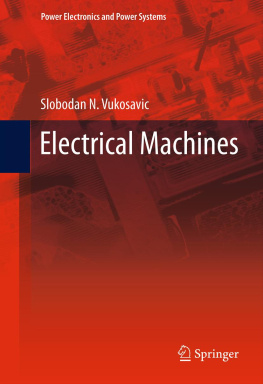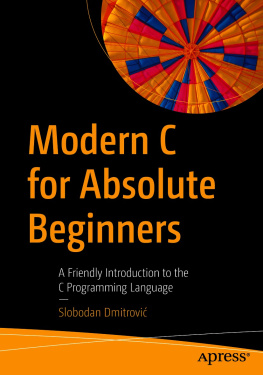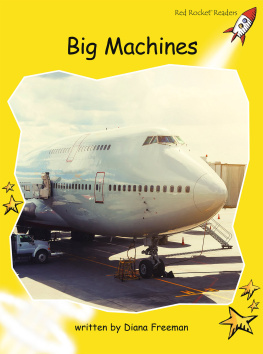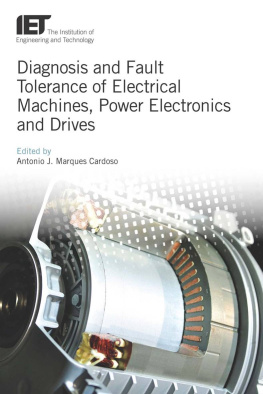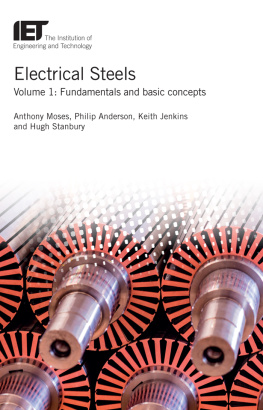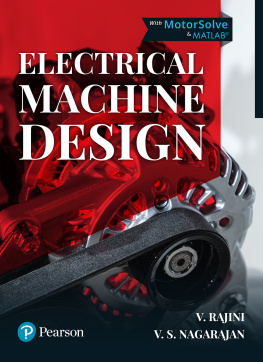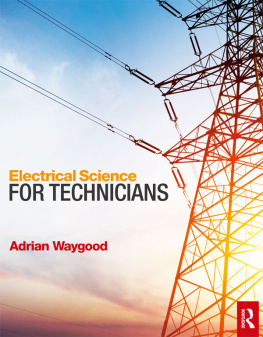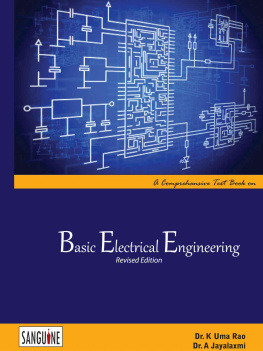This chapter provides introduction to electromechanical energy conversion and rotating power converters. This chapter explains the role of electrical machines in electrical power systems, industry applications, and commercial and residential area and supports the need to study electrical machines and acquire skills in their modeling, supplying, and control. This chapter also discusses notation and system of units used throughout this book, specifies target knowledge and skills to be acquired, and explains prerequisites. This chapter concludes with remarks on further studies.
1.1 Power Converters and Electrical Machines
Electrical machines are power converters, devices that convert energy from one form into another. They convert mechanical work into electrical energy or vice versa. There are also power converters that convert electrical energy of one form into electrical energy of another form. They are called static power converters. Some sample power converters are listed below:
Power converters that generate mechanical work by using electrical energy are called electrical motors. Electrical motors are electrical machines.
Power converters that use the electrical energy of direct currents and voltages and convert this energy into electrical energy of AC currents and voltages are called inverters. Inverters belong to static power converters, and they make use of semiconductor power switches.
Electrical generators convert mechanical work into electrical energy. They belong to electrical machines.
Power transformers convert (transform) electrical energy from one system of AC voltages into electrical energy of another system of AC voltages, wherein the two AC systems have the same frequency.
1.1.1 Rotating Power Converters
Electrical machines converting electrical energy to mechanical work are called electrical motors . Electrical machines converting mechanical work to electrical energy are called electrical generators . Mechanical energy usually appears in the form of a rotational movement; thus, electrical motors and generators are called rotational power converters or rotating electrical machines. The process of converting electrical energy to mechanical work is called electromechanical conversion . Different from rotational converters, power transformers are electrical machines which have no moving parts and convert electrical power of one system of AC voltages and currents into another AC system. The two AC systems have the same frequency, but their voltage levels are different due to transformation. This book deals with the rotating electrical machines, electrical generators and motors, whereas power transformers are dealt with by other textbooks.
Electrical machines comprise current circuits made of insulated conductors and magnetic circuits made of ferromagnetic materials. The machines produce mechanical work due to the action of electromagnetic forces on conductors and ferromagnetics coupled by a magnetic field. Conductors and ferromagnetic elements belong either to the moving part of the machine ( rotor ) or to the stationary part ( stator ). Rotation of the machine moving part contributes to variation of the magnetic field. In turn, an electromotive force is induced in the conductors, which allows generation of electrical energy. Similarly, electrical current in the machine conductors, called windings , interacts with the magnetic field and produces the forces that excite the rotor motion. Unlike electrical machines, the power transformers do not involve moving parts. Their operation is based on electromagnetic coupling between the primary and secondary windings encircling the same magnetic circuit.
1.1.2 Static Power Converters
In addition to electrical machines and power transformers, there are power converters whose operation is not based on electromagnetic coupling of current circuits and magnetic circuit. The converters containing semiconductor power switches are known as static power converters or power electronics devices . One such example is a diode rectifier, containing four power diodes connected into a bridge. Supplied by an AC voltage, diode rectifier outputs a pulsating DC voltage. Therefore, a diode rectifier carries out conversion of AC electrical energy into DC electrical energy. Conversion of DC electrical energy into AC electrical energy is carried out by inverters, static power converters containing semiconductor power switches like power transistors or power thyristors. Static power converters are frequently used in conjunction with electrical machines, but they are not studied within this book.
1.1.3 The Role of Electromechanical Power Conversion
Electromechanical conversion has a key role in production and uses of electrical energy. Electrical generators produce electrical energy, whereas motors are the consumers converting a considerable portion of electrical energy into mechanical work, required by production processes, transportation, lighting, and other industrial, residential, and household applications. Thanks to electromechanical conversion, energy is transported and delivered to remote consumers by means of electrical conductors. Electrical transmission is very reliable, it is not accompanied by emissions of gasses or other harmful substances, and it is carried out with low energy losses.
In electrical power plants, steam and water turbines produce mechanical work which is delivered to electrical generators. Through the processes taking place within a generator, the mechanical work is converted into electrical energy, which is available at generator terminals in the form of AC currents and voltages. High-voltage power lines transmit electrical energy to industrial centers and communities where power cables and lines of the distribution network provide the power supply to various consumers situated in production halls, transportation units, offices, and households. In the course of transmission and distribution, the voltage is transformed several times by using power transformers. Electrical generators, electrical motors, and power transformers are vital components of an electrical power system .
1.1.4 Principles of Operation
Electromechanical energy conversion can be accomplished by applying various principles of physics. Operation of electrical machines is usually based on the magnetic field which couples current-carrying circuits and moving parts of the machine. The conductors and ferromagnetic parts in the coupling magnetic field are subjected to electromagnetic forces. Conductors form contours and circuits carrying electrical currents. Flux linkage in a contour (called flux ) can change due to changes in electrical current or due to motion. Flux change induces electromotive force in contours. The basic laws of physics determining electromechanical energy conversion in electrical machines with magnetic coupling field are:

